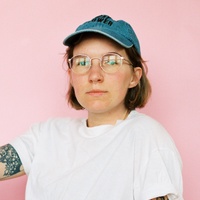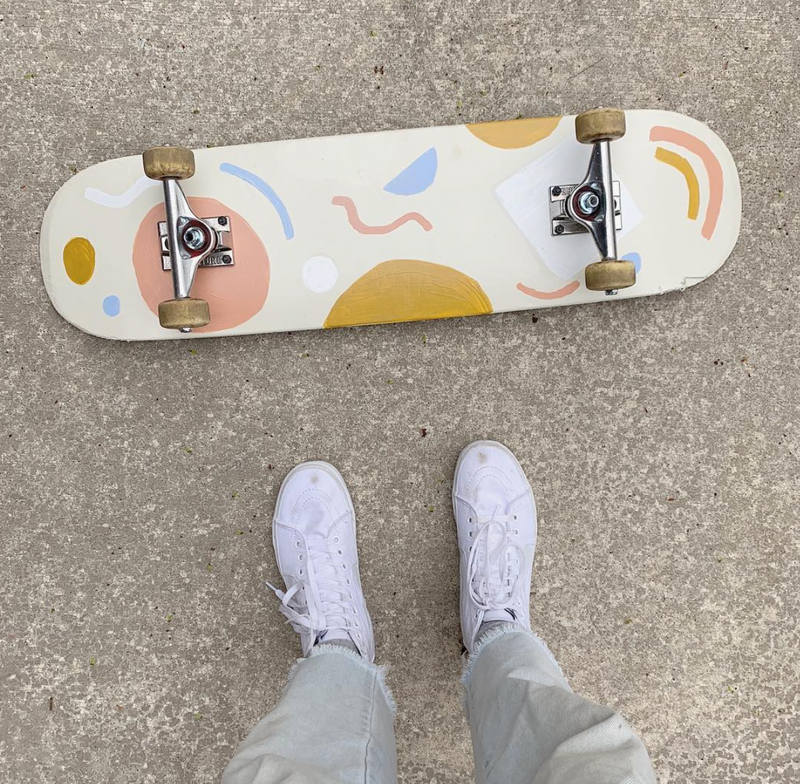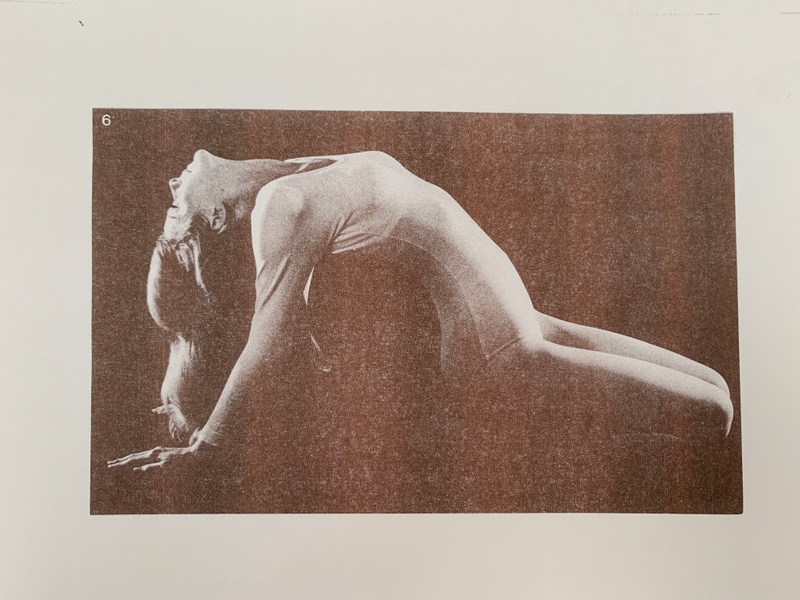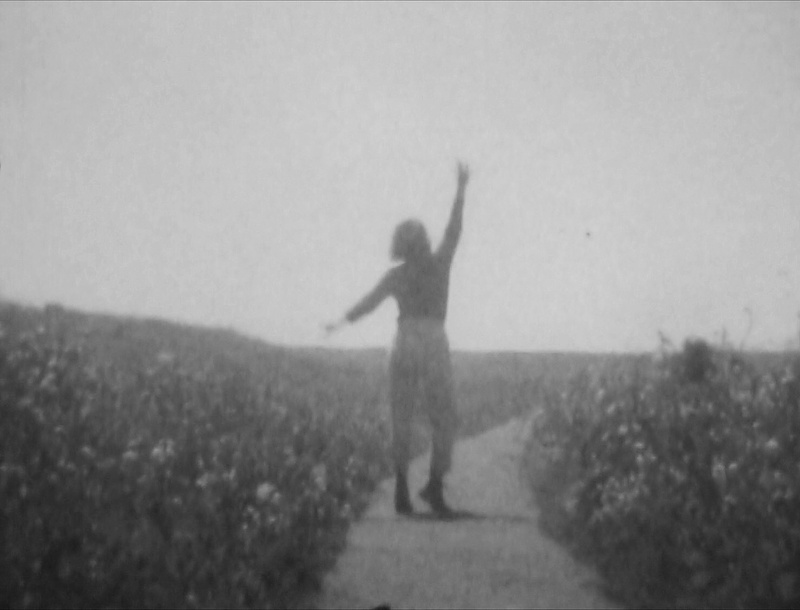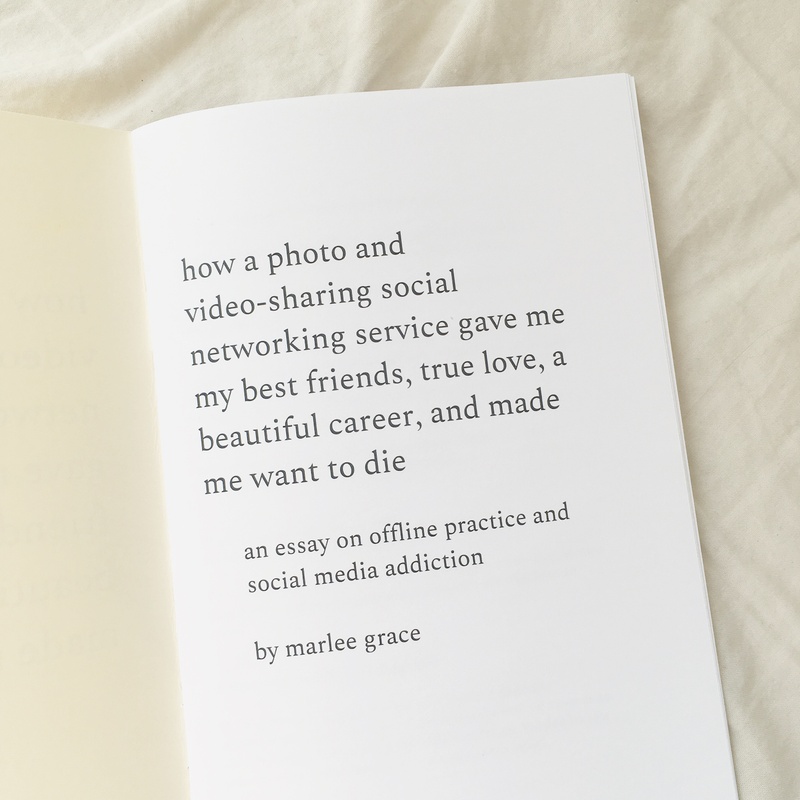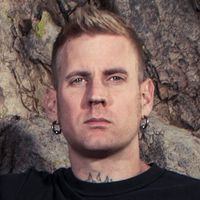As told to Brandon Stosuy, 3644 words.
Tags: Dance, Art, Writing, Inspiration, Time management, Money, Process, Creative anxiety, Collaboration.
On how to be productive without burning out
Dancer, writer, and artist Marlee Grace goes deep on what self-care actually entails, respecting your own limitations and boundaries, and what it means to synthesize your own life experiences into writing.Originally published on March 5, 2020
On how to not always be working
Since I wrote How To Not Always Be Working, I’ve often joked that I need to write a book called How to Get to Work, because my pendulum just swings so hard. I struggle with being organized and really focusing and getting myself to work. My next book is actually sort of more about how to figure out when you’re too far away from your center of gravity around work.
Sometimes my self-care practice can fall into working because so much of my writing falls into a self-help category. The way that I quite literally help myself ends up being integrated into my work. But, my daily practices are really important to me. In the morning, I try to pray and do daily reflection books and journal a couple pages. It helps me dump out my thoughts before the day even starts, to just sort of clear myself and be like, “Okay, where do I need to go for the day?” Usually I make a to-do list, and usually when I make my to-do list is when I’m evaluating what kind of work needs to be done, like, “What’s the priority?” I think I’m also just trying to be honest with myself about how many hours are in a day.
So yeah, I feel like my morning time is a very sacred time for me to map out my day, because so many of my days are just open. I’m in charge, so I have to really figure out what’s important to me that day. And another thing that’s important to me is just cycles: Where am I in my menstrual cycle? Where are we in the seasonal cycle? And just sort of honoring where my body is that day too, like: How tired am I? How much energy do I have? I have more energy today, cool, I’m going to push myself to do a little bit more work today.
I’m always having new breakthroughs with what this looks like. I can say that lately, a good way for me to know that I’m not working, is when I’m trying to pick up a new hobby or something that I know I’m bad at, if that makes sense. My partner is very sporty and she recently took me to a hockey rink to play around. She’s very good at hockey, and I remember getting there and being like, “There’s no way. There’s all these fast men skating.” I was like, “I can’t go out there.” I feel like skateboarding has been an important thing to me, too.
On pets as a way to slow down
We’ve also been puppy parenting for the last couple months. Getting a dog brings in a whole new level of having to communicate and figure out: Who’s watching the dog? When is that happening? When do we get to have fun? When is it time to work?
We’ve been reading The Art of Raising a Puppy. It’s by The Monks of New Skete, this group of monks that raises German Shepherds and trains dogs, and they talk a lot about, especially with a puppy, that you have to be watching them because you truly turn your head and they’re just destroying your grandmother’s quilt or something. You really have to keep an eye on them. They talk about how it can feel stressful at first, and then you get to turn that into gratitude because you get to view the world through this deeper awareness now, because you have to pay attention to your dog. It’s like I’ve gotten to see the world through the eyes of this very curious animal who’s so easily excited. And she also rests when she wants to. She really teaches me a lot about pacing myself through the day.
On having multiple creative outlets
I’ve been dancing since I was five. I started writing at a really young age and then have been using Instagram for the last seven years or something. That’s definitely its own medium, too. Sometimes I feel like I push against that and I want Instagram to just be a promotional tool. But I’m like, “No, I have really built a way that I communicate with people on this app, so that does become a part of the way that I work or the way that I communicate.”
I think sometimes I’ve had that feeling of, “I wish I was just an author” or “I wish I was just a dancer.” But I really see how much each medium that I work in really informs the other one. Everything I do is really rooted in my improvisational movement practice. That’s what I have the most training in and the most confidence in. That’s where I really learned about compositional choice-making. I think that the way that I improvise in dance is sort of the way that I make decisions with other mediums: What needs something more right now?
[Related reading: Michael Stipe on having multiple creative lives→]
But I’m always kind of trying to figure that out. I go through seasons. Lately, I’ll think my dance practice feels like it’s lacking, but then it’s funny—I just released a big music video the other day [for Waxahatchee’s “Lilacs”]’ and I’m about to go work on another music video. I think that’s where our work is so internal. “I shared that yesterday, but I made it four months ago.” It’s easy to project what we are working on. I think sometimes I just start to notice, if I say I wish I was doing something more, I try to just remember that I, again, am the boss of this whole thing, so I can just sort of pivot where I need to.
On communicating without words
It feels good to have an impact on people without having to say anything. “Oh, I don’t have to explain myself. You just get to watch my body move and be inspired by that.” And I think that is part of why it’s important to me to continue to cultivate my dance practice outside of writing, because when I write, I’m really in my head. That’s where my thoughts come from. With dancing, even if I’m dancing to music, I can sort of tap into silence in a way that is refreshing and calming, to just kind of turn the dials down on my brain. I like physical touch, too. I think that’s really important to me with my partner, with my friends, to just be touching and hugging and holding and kissing. The warmth of touch is an important communication tool for me.
On momentum
I started running the last couple of months for the first time, and I’ve really been enjoying it. I got a gym membership and haven’t gone for a week and felt that today, where I was like, “Wow, I don’t even want to go, because I just don’t want to start again.” When I was going every other day or no more than three days away, it was just easy. I was like, “Here we go.” And that was the same with my dance practice. When I used to post on personal practice to my Instagram project every single day, there was no blockage, because I was just like, “That’s the rule, we do this every fucking day.”
On being nice to yourself
I think the biggest thing in those moments, though, is so much of what I write about and think about is how to be nice to myself. I feel like for so many artists, that is the truest creative block—we’re just assholes to ourselves. Why is it actually hard to start again? Because I’m maybe not being nice to myself. Yeah, I was busy this week. I was doing other stuff.
There’s some writing in 12-step literature, that I really like, about praying. It says, when you get off track, not if, that the only answer is to resume prayer. I always really liked that, because you just resume. You just start praying again if you’ve stopped. You don’t sit and beat yourself up for two weeks. You just start. You just resume. I really try to carry that to other practices that I have. I love Sister Corita Kent’s rules for the classroom. A lot of her writing is, “There’s no space to analyze this. Just start again. Just make art, just do it.” Maybe 70% of our making is thinking about how we should be doing it. I’ve been trying to cut down on that.
On abandoning projects
I love letting things go. That’s part of why I named my class “Everything is a Sunset.” I like the idea of, “We don’t have to just end things in these crazy, abrupt ways.” Just as the earth teaches us that it’s not just dark all of a sudden and then it’s bright all of a sudden. There’s this fadeout that happens.
I’ve had huge projects end. I used to own a store and a gallery and a residency in Grand Rapids that I had for four years and I closed it and moved across the country. And, I have this rug on a loom that has been unfinished for literally four years. I carry it to every new house because I’m like, “I’m going to finish it.” My partner recently was like, “I think you should take it off the loom, and then you can start over, if you want to. But it just is sad to just look at this thing that’s been so unattended to.”
I had to say no to a project recently, something that I had originally said yes to, and thought I was really excited about. It wasn’t that I wasn’t excited anymore, but I was just like, “Man, things are changing in the different projects that I’m doing and I just really don’t think I can do this.” It was also hard to disappoint other people, but again, I was just like, “I have to be okay letting this go and I also have to be okay that sometimes letting go of projects does mean that people will be sad or have their own attachment to it.”
So I ask myself, “How do I do that with accountability and grace, while also protecting my boundaries?”
On different kinds of success
I definitely have different success barometers for different things I do. I try to keep them internal instead of external, and check in with, “How do I feel about this?” I remember when How to Not Always be Working came out, I had a lot of fear around it. I was just like: “Will people even want this as a book?” And, even just this handful of people, who when it first came out were like, “Wow, this totally changed my life”—that feels like success to me. I don’t really care how much money it made or how many copies it sold, just having strangers have their own relationship to my work feels like success to me.
Also recently, I made a music video with Waxahatchee. It went well. It has a ton of views on YouTube. It got Best New Track on Pitchfork. Those are success barometers, but to me it’s the people who are making their own videos to it in their kitchen and are sending me messages like, “This makes me want to be in my body. This makes me want to dance again, and I haven’t in a long time.” That is what feels like success. I’m like, “We have success here!”
On downtime
It’s tricky when what we enjoy making is folded into our career. With my knitting practice and quilting, I usually don’t sell what I make. At the same time, I’m not opposed if that were to happen. I don’t have a strict rule about it, but it’s helpful to me to pick projects where I’m like, “I’m not going to do this to make money off of it. I’m going to just play.”
If later I’m like, “Oh, these prints are so great, I’m going to sell them,” great. But at this point it’s my online class, writing books, teaching, speaking, those are my channels of income. And then if I make a finished product that I like, I will maybe sell it if I want to, or I can gift it or something. I had some designs that we were screen printing for a while on shirts and it was really fun. And then I was like, “I don’t want to do this anymore.” And it was great. I’m grateful that I have started to see what I want to tie to my income, so that I can let go of it if it’s not working and I’m not just like, “Oh fuck. I just started a T-shirt business and it’s my only form of income now.”
[Related reading: How to sell your own artwork→]
The shirts were almost a side hustle. It was just fun, and fun to see people wear them. And then I was like, “Okay, this project feels done.” I try to just pick creative things that are not tied to money. And I found that with the Riso prints, it’s been fun to use them on my Instagram. They are images that I can use there to promote classes, but the prints themselves, I haven’t yet been like, “I want to sell these.” But maybe I will. Maybe I will tomorrow. Who knows?
On pushing yourself creatively
The book that’s coming out this fall is five times longer than How to Not Always be Working. It’s very personal. It’s very much about my own journey of healing and creativity and sobriety and coming out as queer. I did something different with the book where I have an editor at HarperCollins, but I also hired a friend to sort of do a read and give me feedback on the overall tone. Something that she came back with was, “It’s part of your charm that you’re funny, but you kind of are too much leaning towards this certain thing.” I start to be like, “I don’t know too much about this thing, but here’s what I do know.”
She’s like, “You just have to say, ‘Here’s what I know.’” I feel like in my newsletter, I think that I’m being humble by being like, “I’m still figuring this out, but here’s this.” People are just like, “What?” Just be confident. Just say that you know this, because you do. And so I think that’s been a big… I went through the whole book and edited all this stuff and I was like, wow, this feels like it was such a small note, but it changed the whole energy of the book to just be like, “This is what I know right now.” And I know it well, because I have lived it.
On collaboration
I don’t collaborate a lot with people, which is fine. I prefer it that way. I used to think I should be more collaborative. But over time, I was like, “No, that’s not how this works for me.” I feel like the way around that for me is that I love creating spaces that other people can be a part of. I think that’s why I’ve always loved running artist residencies. That’s a collaboration. I just prefer to be the host and have other people kind of come into a container that I build.
[Related reading: How to join forces with a creative collaborator→]
My process with writing Getting To Center was interesting, because I started with the same editor as How to Not Always be Working, who I’d built this really intimate relationship with. She left partway through the process to go work at another publisher. I have a new editor now. I got really emotional, because I think I was just so grateful that we got to start the book together, because I think I was able to write such a vulnerable piece because she already knew so much about my life and already knew so much about me. I think if I would’ve just met a new person, I don’t know if I could have actually written the same book.
And, so yeah, it is important to me and I feel like that’s something I’ve really fine tuned. I’ve had difficult experiences collaborating with friends, not because the collaboration itself is difficult—it’s just hard when you start mixing money and expectations. It’s not easy. I’ve learned a lot through what doesn’t work.
On real life vs. art
With friendships, too, I’m just pickier. I think that that also comes with having a lot of eyes on me. I make a lot of people feel like they can be my friend, which I think is very special, but I don’t actually have the capacity to be friends with that many people. I’ve learned to just keep collaborations and friendships really close, and to just keep a small close circle. That has been good for me.
It’s an interesting dividing line. You need to have those boundaries. People can find you everywhere. Direct messages, this or that. Sometimes it is hard to find that alone space, especially when you don’t want the person to feel like, “Oh no, they’re going to think I’m a terrible person because I don’t want to deal with them.” That sort of thing can get complicated.
I’m so open about being sober and being gay and having been married to a man and gotten divorced, and now John and I are best friends and we ran an artist’s residency together. I literally tell the world all my facts, but I’m not necessarily like, “Here are the wounds that I’m currently tending to behind the scenes.” I think another thing that I’ve had to do with my close friends and my family is to remind them that my social media is a performance project. It’s real, but it’s also not. It’s absolutely deeply curated for maximum benefit to me and to my career. That’s what it is. I think people can just look at it and be like, “Wow, your life looks so great.”
It’s tricky, because my life is great. I’ve worked really hard to not kill myself and do drugs and die and to cultivate one of my first healthy partnerships. And it did come with a lot of hard work and I do have a life that I’m proud of and really grateful for, but… I’m always learning, and I can’t respond to everyone, or even read every DM. I like to engage with people, and often prioritize the messages about sobriety, but as the amount of people who follow my work grows and grows and grows, it just becomes impossible to communicate with as many people who want to communicate with me.
That’s why having my online class has been helpful—to turn some of that into my job. It becomes a place where every couple months I can communicate with a lot more people in a space that I am compensated for. I feel like I can be available and help people through what they’re working on, but it’s tricky. I both feel like people often meet me and they’re like, “I feel like I know so much about you. Is that weird?” I’m always like, “No, it’s not weird. I’ve told the world a lot about me, but I also hope you can meet me where I’m at today, which is maybe completely different than what you have invented me as.”
On when the self-help author needs help
I sometimes feel like there’s a projection on me that I’m so lucky to have it all figured out; I can get a little bit resentful of that sometimes. I’ll think about this when I’m deep in therapy, healing ancestral wounds and yelling at my girlfriend because she told me not to use a new cup from the cupboard… But I also have just learned to detach from other people’s experience of me and remember: “Okay, my sessions with my therapist are not part of my career.” That’s where I’m not ready to synthesize things into my work yet.
And then I have to remember: I have a job. My job is to synthesize my life experience into writing for other people to read. I’m always going to be working on something else that’s not ready to share yet. And if I wasn’t, there wouldn’t be any point.
Today I really had one of those days where I’m like, “Am I even worthy of sharing with these people what’s going on, when I feel like I am still so in progress?” But I feel it less on the other side of the Saturn Return. I think being in my 30s is helpful. I just am more comfortable with the idea that this work is forever and I’m going to always be healing and I’m always going to be figuring this out.
Marlee Grace Recommends:
-
Your Art Will Save Your Life by Beth Pickens
-
PAINTINGS FOR THE FUTURE by Hilma Af Klint
-
Good Talk by Mira Jacob

